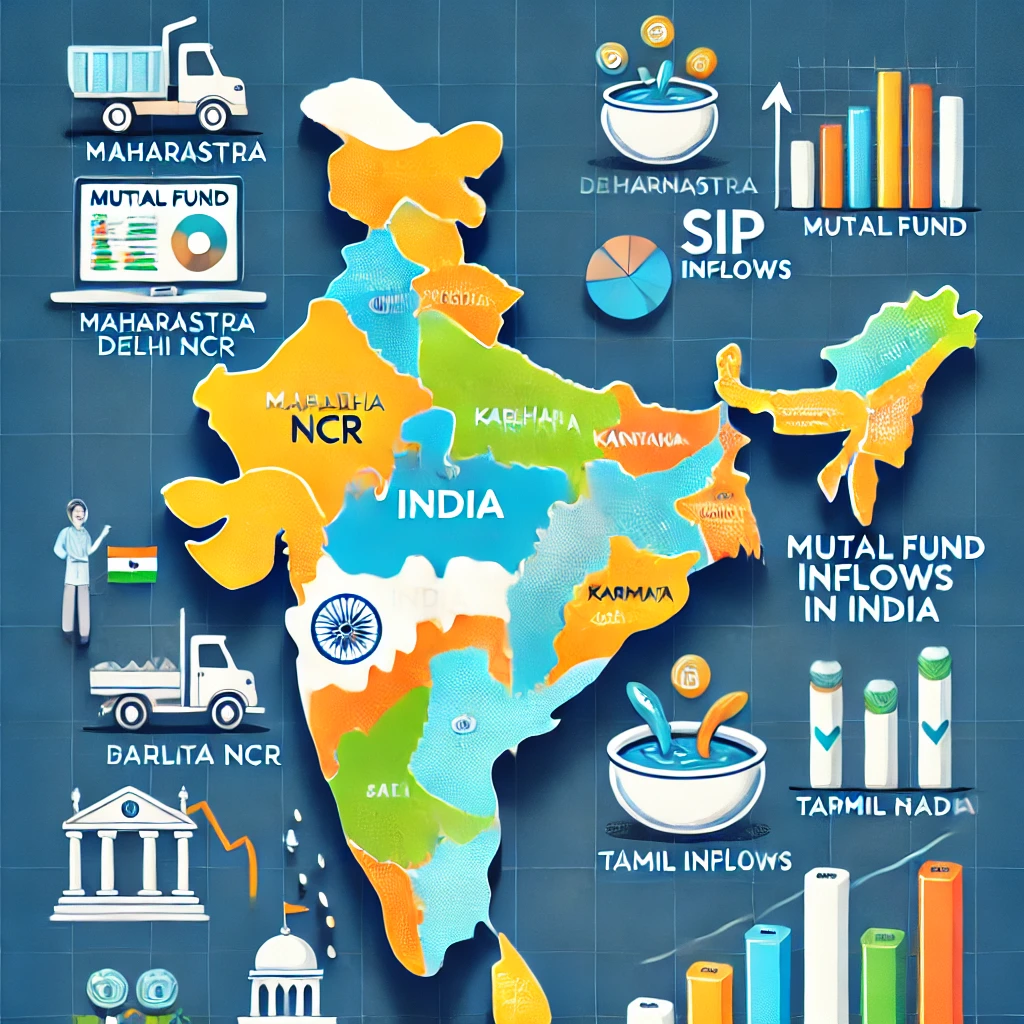India’s mutual fund (MF) industry has seen a remarkable surge in inflows, making it an attractive avenue for those on the Financial Independence, Retire Early (FIRE) journey. Investors are increasingly turning to Systematic Investment Plans (SIPs) as their preferred investment strategy, contributing to record-breaking inflows. This post dives into recent trends in mutual fund inflows, highlights the states leading in contributions, and explains why SIPs are central to building wealth. Let’s explore how these trends shape the future of Indian retail investments and why they matter for aspiring FIRE achievers.
Understanding Mutual Fund Inflows: A Growing Investment Culture
The Indian mutual fund industry has witnessed unprecedented growth in recent years. Data from the Association of Mutual Funds in India (AMFI) highlights a consistent rise in retail participation, reflecting an increasing awareness about the benefits of mutual fund investments. This upward trend can be attributed to several factors:
- Enhanced Financial Literacy: As financial awareness grows, more Indians understand the benefits of disciplined investing and portfolio diversification.
- Digital Onboarding: Digital platforms have made it easier for investors, especially first-time users, to start their investment journey.
- Market Resilience and Inflation Hedging: With inflation rising, people recognize the importance of investing in assets that have the potential to beat inflation and ensure long-term financial security.
These factors combine to create a favorable environment for mutual fund investments, especially through SIPs, which allow investors to avoid timing the market and instead focus on systematic, long-term growth.
SIPs: The Backbone of Retail Mutual Fund Inflows
Systematic Investment Plans (SIPs) are a favorite investment approach for many retail investors in India. By allowing individuals to contribute a fixed amount periodically to their chosen mutual fund, SIPs make investing accessible and manageable. The SIP approach has proven resilient to market volatility, as demonstrated by monthly SIP inflows that have consistently surpassed ₹14,000 crores, according to recent AMFI data.
Why are SIPs so popular? Here’s why SIPs continue to attract significant inflows:
- Consistency: SIPs enable investors to set aside a fixed amount regularly, making disciplined investing easy.
- Rupee Cost Averaging: Regular contributions help investors buy more units when prices are low and fewer when prices are high, potentially reducing the average purchase cost.
- Power of Compounding: Compounding allows SIP investors to grow wealth steadily over time, which is crucial for long-term goals like financial independence.
Top States Leading Mutual Fund Contributions in India
While mutual fund investments are becoming popular across India, some states stand out as leading contributors. Below are the top five states driving mutual fund inflows and leading the way toward a financially independent nation.
1. Maharashtra
Maharashtra is the largest contributor to mutual fund inflows in India, primarily because of its financial hub, Mumbai. Accounting for over 40% of the nation’s mutual fund assets, Maharashtra is home to numerous institutional and high-net-worth investors who invest heavily in mutual funds.
2. Delhi NCR
Delhi NCR ranks second in MF contributions, thanks to its urban population and access to quality financial advisory services. Investors here, mainly from salaried backgrounds, contribute significantly to SIPs, showcasing a strong inclination towards disciplined investing.
3. Karnataka
With Bengaluru as a key economic center, Karnataka ranks third. Its tech-savvy residents, many of whom are salaried professionals, are active SIP contributors, driving long-term wealth creation.
4. Tamil Nadu
Tamil Nadu is an emerging mutual fund investment hub, especially for retail investors. Chennai and surrounding areas show increasing interest in SIPs, adding to the overall state contribution.
5. Gujarat
Known for its business-oriented population, Gujarat has seen a gradual shift towards mutual funds as a key investment vehicle. Investors in Gujarat are increasingly diversifying their portfolios by adding mutual funds.
Role of Domestic Institutional Investors (DIIs)
Domestic Institutional Investors (DIIs) such as mutual funds, insurance companies, and pension funds play a vital role in India’s mutual fund landscape. DIIs provide a cushion to the stock market during volatile times, especially when Foreign Institutional Investors (FIIs) pull back. DII activity supports steady market growth and complements retail SIP inflows, thus promoting market stability—a critical factor for long-term investors and FIRE aspirants.
For FIRE enthusiasts, following DII investment trends can provide insights into market stability and growth, especially during periods of volatility. As DIIs continue to invest in equity and debt markets, they reinforce market confidence, helping long-term investors stay the course.
Key Takeaways for FIRE Enthusiasts
For those pursuing financial independence, understanding mutual fund inflows and SIP trends can shape better investment decisions:
- Consider SIPs for Consistent Growth: SIPs are an effective tool for wealth creation and can help build financial independence through disciplined investing.
- Leverage State-Specific Financial Trends: Certain states are witnessing higher financial literacy and investor participation. Investors in these states can access more financial education programs and advisory services.
- Observe DII Trends for Market Stability: DIIs bring resilience to the market, helping to stabilize it during rough patches. Observing DII activity can provide clues to potential market resilience.
With disciplined SIP investing and insights from broader market trends, FIRE aspirants in India are well-equipped to make informed investment decisions that align with their goals.
For more insights on investing and achieving financial independence, check out these resources: AMFI India’s Latest Reports and The Economic Times – Mutual Funds.
